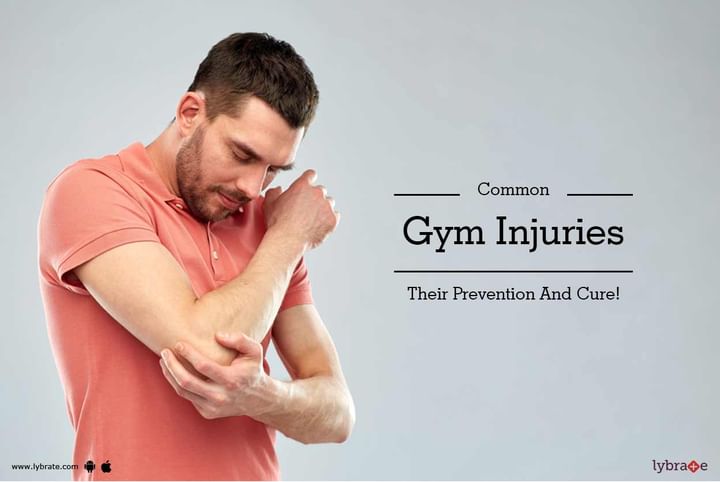Common Gym Injuries - Their Prevention And Cure!
A workout session is often tedious and exhausting, especially for those who aren’t comfortable with strenuous exercises. And, many a time, you can experience significant pain in pursuit of a fit body - injuries, strain, and sprain become a part of your life. The most common gym injuries one might have while working out are-
- Muscle pull or strain- A muscle pull can injure anyone regardless of their age. This usually results from strenuous physical activity. Sometimes, overstretching can cause the muscle fibers to tear, which in turn affects the hamstring or calves. The most common symptoms include- bruising and discoloration, stiffness, localised pain.
- Ankle sprain- This refers to an injury to your ligaments. This occurs when you mistakenly twist the ligament while exercising. If you have a sprained ankle, you will likely notice these symptoms- bruising, swelling, stiffness and tenderness, difficulty putting weights on the ankle.
- Shoulder injury- Several other muscles, ligaments, and tendons hold your shoulder together, thereby making it prone to injuries during workout sessions. Weight lifting exercises like Machine Shoulder Press, Overhead Shoulder Press etc can lead to serious shoulder injuries like the Rotator Cuff injury, if you don’t follow the right technique.
- Tendinitis- Tendinitis is caused due to the overuse of tendons during the workout. Tendons are wide cords joining the muscle to your bones. When the tendons become inflamed, it restricts the movement of the joints, resulting in pain.
- Shin Splint- This injury is caused due to recurrent trauma to the connective tissues. This tissue connects the tibia bone to the muscles, and when these tissues break down or become inflamed, stiffness and pain are experienced. People who engage in long running-cycles are most likely to have a shin splint.
- Runner’s knee- This type of injury is common in those who spend several minutes on the treadmill. Runner’s knee is characterized by mild dull pain at the back of or beneath the kneecap, typically felt while running.
Repetitive motion, not having enough rest after completing one set of the exercise, simple wear and tear- all these result in workout injuries. Many a time, people don’t pay much attention to these injuries and continue with their daily activities. Studies reveal that overuse of body parts account for about 30% of all injuries. Ignoring these injuries may lead to serious health conditions in the long run.
A few precautionary measures can be adopted to prevent such injuries-
- If you’re running on the treadmill, make sure you have full control over your movement and the speed of the machine. Most treadmills these days come with a clip that you can attach to your clothes so that if you lose control and fall off the treadmill, the machine will stop immediately and prevent you from sustaining any grievous injury.
- Wear proper shoes that support your feet and are comfortable to move around. Watch out for slippery, uneven floors. Athletic shoes are specially designed to fit your feet well for this purpose.
- Don’t start your workout session by lifting heavy weights. Start with mild, warm-up exercises (stretching, Jumping Jacks, free-hand squats) to allow your body to become accustomed to the environment.
- Maintain a healthy body weight. This is essential because an overweight person is more likely to get affected by injuries to the joint bones, fractures etc.
How are these common injuries treated?
Injuries sustained during workout sessions need to be looked after. Urgent medical intervention is recommended in such cases so that the pain does not hinder your movement and routine activities for long.
The most effective and preferred choice of treatment to cure gym injuries is the RICE technique.
- Rest (R)- Make sure you don’t put too much pressure on the injured area. Refrain from any physical activity and allow your injury to heal.22481
- Ice (I)- Apply ice on the injured area to reduce swelling and inflammation.
- Compression (C)- In order to reduce swelling, apply a compression bandage.
- Elevate (E)- Elevate the wound/injury to minimize swelling.
Your doctor will also prescribe a few anti-inflammatory drugs and painkillers to ease the pain. You can also use a shoulder splint to keep the injured shoulder/arm in place. In case you have a concern or query you can always consult an expert & get answers to your questions!



+1.svg)
